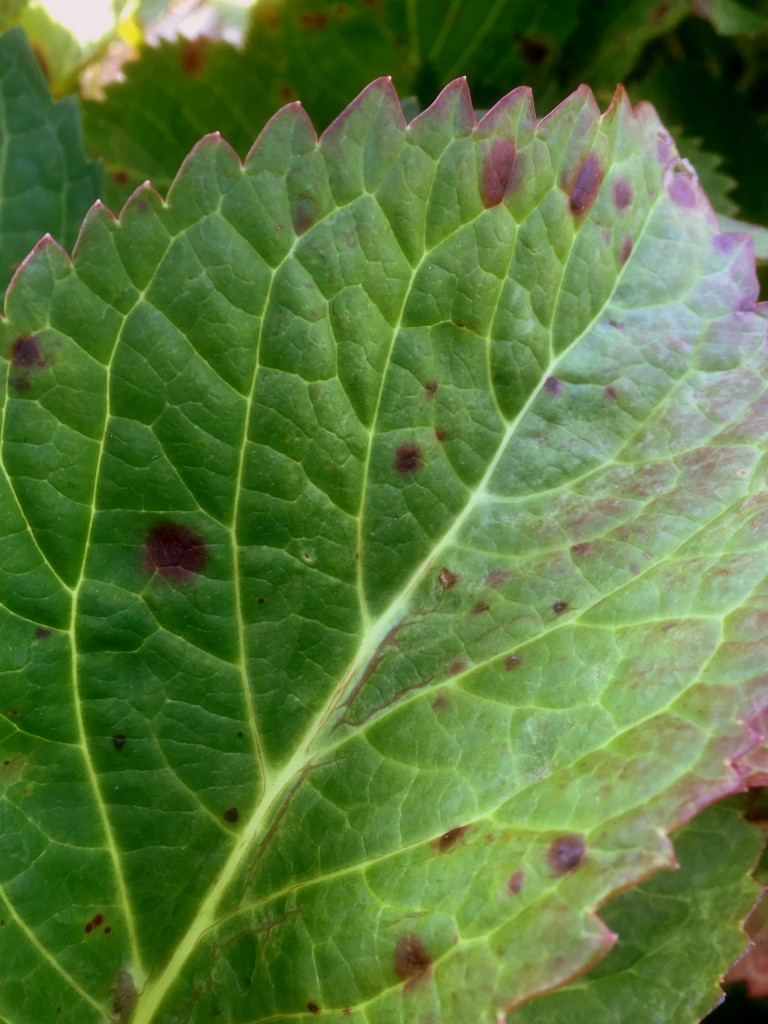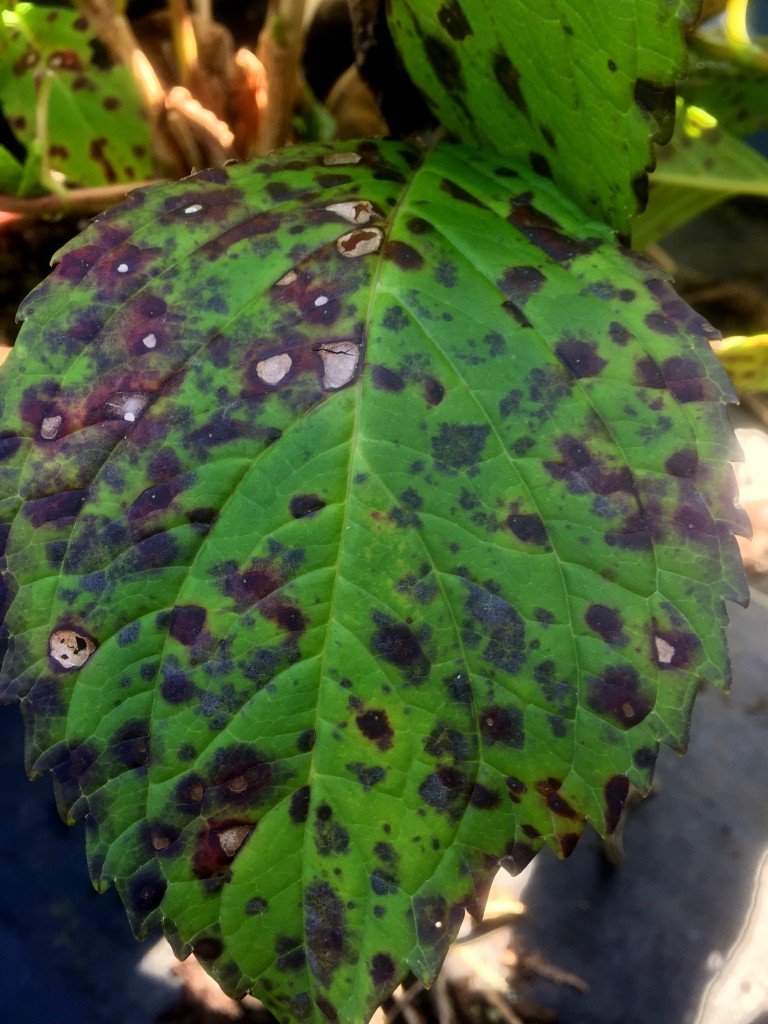
One of the most frustrating problems that befalls Hydrangeas in residential landscapes is leaf spots. In the beginning, a few small spots appear on the leaves. As July turns into August fungal diseases become more and more noticeable. What began as a few purple specks can quickly spread into a pattern of many small or large spots, some even leaving holes in the leaves. A heavy crop of spots can really destroy the ornamental value of a plant.
When Hydrangeas are well grown, leaf spots are generally not an issue. Overhead irrigation, warm foggy days, and damp nights favor the spread of these diseases. There are two common fungal leaf spots that affect these plants: Cercospora and Anthracnose.

Cercospora Leaf Spot is caused by the fungus Cercospora hydrangeae. These are generally small spots, starting as small purple or tan spots at the base of the plant. As the disease progresses the spots will move up the plants, affecting most of the leaves. By early fall, the spots develop a “frog-eye” look, with a papery-tan center and dark purple halo. Heavily spotted leaves often turn yellow and fall to the ground. These infected leaves serve as inoculum for future infections. Anthracnose Leaf Spot is caused by the fungus Colletotrichum gleosporioides. These spots initially look similar to Cercospora, but can become many times larger, as the fungus radiates out from the initial point of infection. Alternating darker and lighter rings form, giving the spots a distinctive bull’s eye appearance. The rounded spots may become irregular as they contact veins in the leaf. Infected areas of leaf tissue can take on a sunken appearance as well. Unlike Cercospora, Anthracnose often occurs simultaneously on leaves and flowers in both the lower and upper part of the plant. During favorable conditions (temperatures between 75 and 90 degrees F) spores develop in overwintering leaf debris. These spores are primarily spread to the leaves by splashing water during rain events.
Bacterial Leaf Spot is also a problem with Hydrangeas. The bacteria Xanthomonas campestris causes spots to appear on infected Hydrangea leaves starting in summer. The bacteria is splashed up onto the leaves from overwintering innoculum in the soil or leaf litter. The bacteria enters the leaves through wounds or the natural openings (stomates and hydathodes). These angular lesions continue to grow and coalesce forming large necrotic patches on the leaves.
Treatment for leaf spots of all kinds is generally the same. At the first sign of infection, (or earlier in areas that are historically spotty) begin to spray with a suitable fungicide. Copper-based products are touted to help with bacterial infections as well. Just be careful with copper, some plants are sensitive to it – check the label. The fungicide should help to stop the infection from spreading to new leaves. If the spots haven’t spread throughout the entire plant, consider removing infected leaves. More fungal spores can be released from the spots, if the fungus completes it’s life cycle. Continually remove fallen leaves, and be sure to clean up any leaf material that remains after the frost. Old leaf litter is the primary source for these pathogens.
-Brad MacDonald
